The secret reason why a minister wrote the Pledge of Allegiance
Every morning, millions of American children put their hands over their hearts and begin the school day with a simple recitation. It’s been done for nearly 125 years and is as much a part of American culture as apple pie and the Fourth of July.
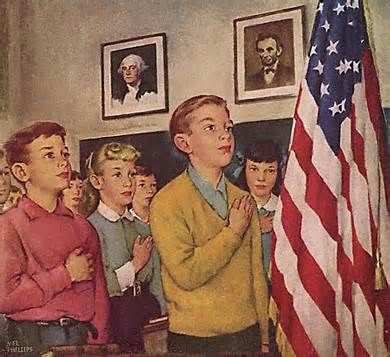 But did you know more than patriotism was behind the Pledge’s creation? A master wordsmith penned the famous words for an unlikely reason – it was a clever marketing gimmick with a hidden purpose. But the real shocker is the way kids originally saluted the flag while reciting it.
But did you know more than patriotism was behind the Pledge’s creation? A master wordsmith penned the famous words for an unlikely reason – it was a clever marketing gimmick with a hidden purpose. But the real shocker is the way kids originally saluted the flag while reciting it.
Get ready to learn the incredible story of how we got the Pledge of Allegiance.
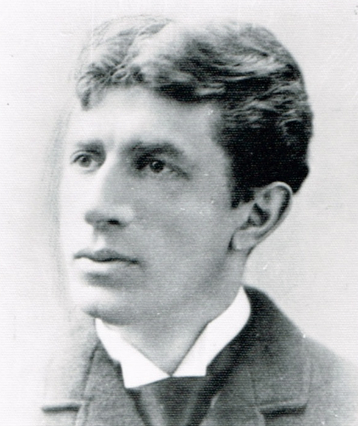 It started with Francis Bellamy.
It started with Francis Bellamy.
Born into a devoutly Baptist family in Upstate New York, his minister father died before Bellamy was 8 years old. The boy followed in his father’s footsteps, studying theology and entering the ministry himself in the 1880s.
 Social experimentation was in the air in those days, and Bellamy became something of a socialist Baptist. The problem was, his parishioners in New York state and Massachusetts weren’t. The result: he was bounced from church to church.
Social experimentation was in the air in those days, and Bellamy became something of a socialist Baptist. The problem was, his parishioners in New York state and Massachusetts weren’t. The result: he was bounced from church to church.
Dissatisfied with the ministry, he wound up in New York City and switched to a new line of work. The Youth’s Companion was a popular magazine in the Victorian Era. Its target audience was good girls and boys, and it instructed them on ways to become even “gooder.” Bellamy got a job in its premium division.
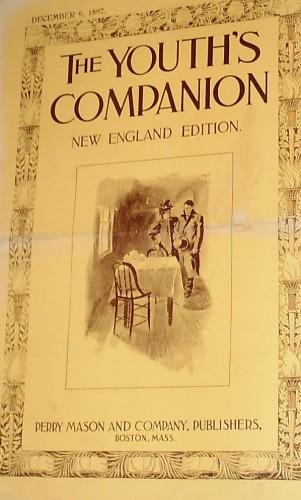 For several years, The Youth’s Companion had sold American flags as a promotion to its readers. The goal was to place a flag in every classroom in America. That, it was believed, would help pass on American values to youngsters. And the magazine made money from those sales, too. Patriotism and profits combined nicely for publisher Daniel Ford.
For several years, The Youth’s Companion had sold American flags as a promotion to its readers. The goal was to place a flag in every classroom in America. That, it was believed, would help pass on American values to youngsters. And the magazine made money from those sales, too. Patriotism and profits combined nicely for publisher Daniel Ford.
But by 1892, sales were slumping. Flags were now on the walls in 26,000 schools around the country. Ford believed still more juice could be squeezed from this fruit; but how?
History came to the rescue.
With perfect timing, 1892 happened to be the 400th anniversary of Christopher Columbus’ arrival in the New World. The Youth’s Companion pushed for a Columbian Public School Celebration to mark the occasion … and to sell more school flags, too. Francis Bellamy was tasked with making both happen.
Bellamy jumped into his new mission with evangelistic fervor. He promoted the event to a national convention of school superintendents. They liked the idea so much, they created a special committee to get local schools involved, with Bellamy as its chairman. All agreed the U.S. flag was central to the celebration.
But a nagging problem remained: how to get schools that hadn’t bought flags to purchase them?
Then inspiration hit. Bellamy proposed a Pledge of Allegiance to the flag, to be recited by all American students on the same day.
 Bellamy sat down at a desk and picked up a pen. Two hours later, his 23 word masterpiece was finished. The original Pledge said: “I pledge allegiance to my Flag and to the Republic for which it stands, one nation, indivisible, with liberty and justice for all.”
Bellamy sat down at a desk and picked up a pen. Two hours later, his 23 word masterpiece was finished. The original Pledge said: “I pledge allegiance to my Flag and to the Republic for which it stands, one nation, indivisible, with liberty and justice for all.”
The Pledge appeared in the September 8, 1892 edition of The Youth’s Companion. The gimmick worked. It’s pretty hard to say the Pledge without a flag (wink, wink). Desire to be part of the big event spurred the final schools into purchasing Old Glory. The result: the magazine sold thousands more flags.
And on October 21 of that year, millions of students recited the Pledge for the very first time.
There was something else, too. The original Pledge was said with students standing and giving the “Bellamy Salute.” Take a look:
It was the traditional Roman Salute from the time of Caesar. That worked fine in 1892. But by the 1920s and 30s, first Fascists in Italy and later Nazis in Germany were using the same salute, but with a sinister meaning. When the U.S. entered World War II, kids standing with outstretched arms wasn’t such a good idea. So in 1942 Congress amended the Flag Code to say the Pledge should be recited the way we know it today, with the right hand over the heart.
The Columbian Public School Celebration was a big success, and it cemented Bellamy’s reputation at the top of the newly emerging advertising and public relations fields.
In fairness, Bellamy sincerely believed his efforts instilled what he called “Americanism” in kids living amid a flood of “alien immigration.” But you can’t dispute he also put a lot of money in publisher Ford’s pockets, too.
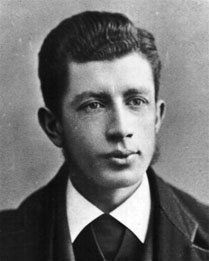 Bellamy seems to have experienced a change of heart toward money. After writing the Pledge, he switched from socialist to capitalist and enjoyed a lucrative career as a forerunner to Madison Avenue “Madmen,” using his writing talent to promote big business giants Westinghouse and Allied Chemicals.
Bellamy seems to have experienced a change of heart toward money. After writing the Pledge, he switched from socialist to capitalist and enjoyed a lucrative career as a forerunner to Madison Avenue “Madmen,” using his writing talent to promote big business giants Westinghouse and Allied Chemicals.
The Pledge underwent changes over the years, too, the biggest being in 1954 when Congress added the now familiar words “under God.”
Today, 46 states require the Pledge to be recited during the school day (Hawaii, Iowa, Wyoming and Vermont are the only holdouts).
People know the short, direct-to-the-point Pledge better than the Declaration of Independence, the Constitution and the Bill of Rights. Those 31 simple words remind us of the essence of what America is all about, and reciting it daily unites us as a nation.
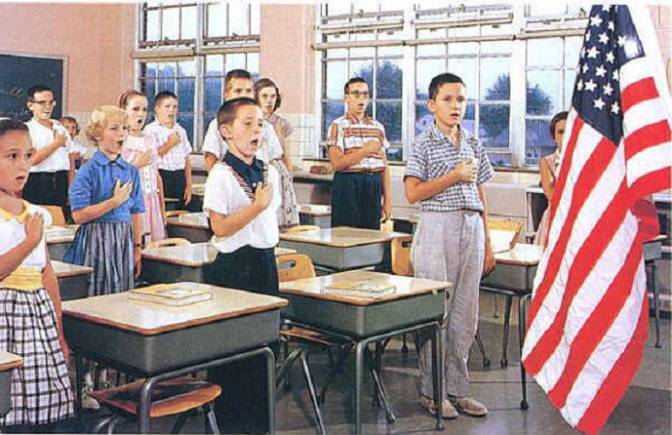 Sure, the original idea was based on the desire to make a few bucks. But the Pledge also produced a lot of good over the years and that is, in the words of a famous advertisement, priceless.
Sure, the original idea was based on the desire to make a few bucks. But the Pledge also produced a lot of good over the years and that is, in the words of a famous advertisement, priceless.
Did you find this enjoyable? Please continue to join me each week, and I invite you to read Tell it Like Tupper and share your review!
Curious about Tell It Like Tupper? Here’s a chance to see for yourself. Take a sneak peek at a couple chapters in this free downloadable excerpt.


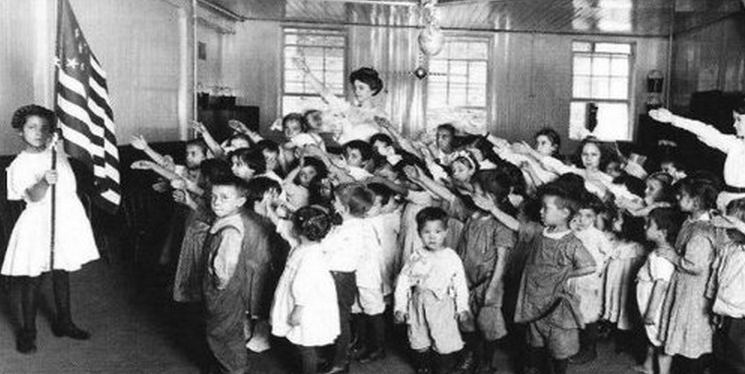
Loved reading and learning about how our Pledge of allegiance came into being…Holy Cow!
Your piece states that Francis Bellamy’s father died before he was born. That is erroneus. Francis was 8 years old when his father died. Francis Bellamy’s ashes and his parents are interred in Rome Cemetery in Rome, NY.
Victor J. Fariello Jr.
Chairman
Francis J. Bellamy Community Awards Committee
Rome, NY
Thanks for your message, Victor. I appreciate the update; I had received inaccurate information. I am correcting the story now. Thanks again for reaching out to me.